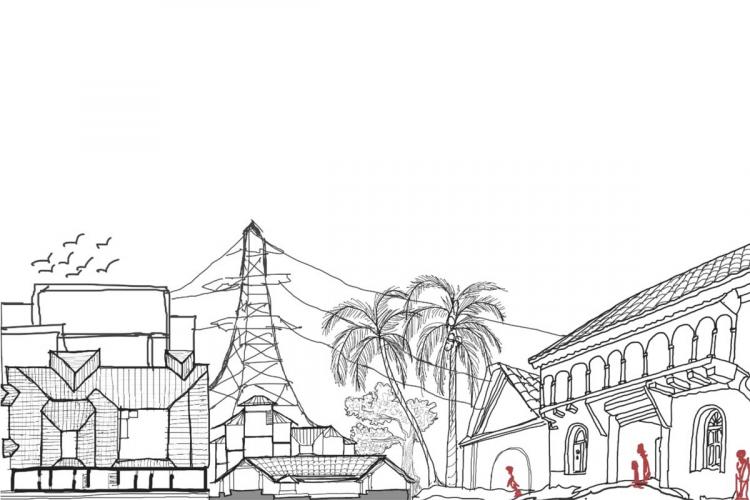Changes in climate patterns in India have lead to higher temperatures and humidity, making conditions unbearable in many areas. Around 50% of India lives in a warm and humid zone. India is one of the countries with the lowest access to cooling in the world, and the need is expected to rise exponentially.
Traditionally, courtyards, high thermal mass walls, and optimum window sizes were commonly observed features of dwellings. With the cultural influence of colonial bungalows, outdoor lawns became preferable over indoor courtyards. The rise in population, land politics, and space constraints has resulted in many outdoor spaces being consumed in building more structures.
Walls grew thinner due to area constraints and windows grew bigger leading to more heat gain inside buildings. Glass enables views and efficient daylight, but it is often overused.
Moisture-absorbing materials like mud bricks and rammed earth were traditionally used for walls in humid regions. With multi-story construction and flat roofs becoming a custom these became obsolete and red-brick and concrete a standard. Brick and concrete are further being superseded with glass, aluminum, and steel structures. Mangalore tiles, bamboo shingles, or coconut palms, often constituted their sloping roofs, as these regions experience heavy rainfall.
Designers have begun to understand the importance of thermal comfort, sounds, and other multi-sensory perceptions for promoting good physical and emotional well-being.
A warm and humid climate necessitates constant air circulation to control humidity and heat gain. Making narrow building floor plans and channeling wind properly by keeping smaller window sizes in a windward direction, larger in a leeward direction; or an inlet at a lower, and an outlet at a higher level helps in maintaining pressure-driven wind movement. Keeping medium size openings of 20-40% of wall surfaces is advised to avoid moisture gain.
High relative humidity in some months renders evaporative cooling ineffective (which works well in hot-dry climates), and mechanical air conditioners become essential to provide thermal comfort, in certain months.
India’s Ministry of Housing and Urban Affairs launched the Global Housing Technology Challenge to find a variety of sustainable, and disaster-resistant building technologies from across the world for the housing sector. While many states have adopted the Energy Conservation and Sustainable Building Code, effective implementation remains a challenge. Compliance with these can significantly improve the thermal performance of buildings and help fight climate change while providing benefits like reduced electricity bills and better physical and psychological health for residents.
You can read the original article at www.thenewsminute.com

